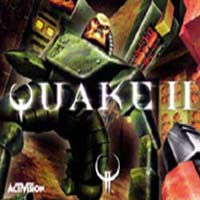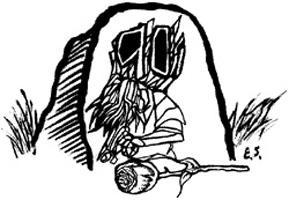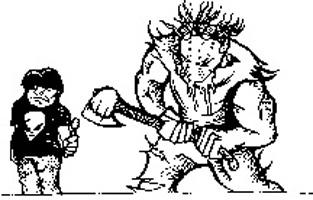 Vampire Hunter D
Vampire Hunter D
with Kaneto Shiozawa, Michie Tomizawa, Seizô Katô
Directed by Toyoo Ashida
Written by Hideyuki Kikuchi, Yasushi Hirano
(Urban Vision)
by Eric Johnson
I first saw Vampire Hunter D several years ago, when dubbed or subtitled Japanese animation was still a rare novelty, and it was the first time I felt betrayed by our friends across the Pacific. Upon viewing the re-dubbed and considerably better translated re-release of this film, I’m sad to report that it’s still a chore to sit through.
You see, at some point between now and the year 12,000, the Earth is overtaken by all manner of vampires, werewolves and assorted demons. In the middle of all this trouble, small villages of humans lay low, hiring the occasional ronin-like “vampire hunter” to go out, kill the local monsters, and give them a little breathing room. Doris, a local farm girl, must hire one of these hunters when the local vampire, Count Magnus Lee, takes a fancy to her. Her choice for protector is our Byronic hero, D, a powerful, mullet-haired vampire hybrid wearing the stupidest outfit I’ve ever seen and brandishing an absurd fifteen-foot-long sword.
With bad translation and insipid dialog no longer dragging it down, Vampire Hunter D is still plagued by uncomfortably bad animation, grating characters, and what can only be described as a critical lack of style. The animation is of the highly distorted variety, the kind that occurs when every pedophile in Japan is given a crayon and asked to illustrate the perfect woman: huge eyes, tiny features, dome-like forehead. I know this is a style of animation, but it makes me very uncomfortable. What really annoys me is that they took this animated cupie doll, with her pink tights and automatic rifle, put her in the middle of a medieval Eastern European village, then packaged it all up as a Gothic horror tale. I don’t like the sci-fi/fantasy mix. I don’t like the fact that this feudal society, with ruffled collars and horse drawn carriages, seems to have indoor plumbing and leather sectional sofas. Style and nitpicking aside, the characters are simply grating, foremost among them the lanky, effeminate, omnipotent D himself. He spends the whole movie dead silent, only opening his mouth to advise Doris’ little brother to be sensitive to the feelings of others, and being harassed by his alter ego, a face on his palm with a taste for dirt. I know he’s supposed to be tortured by his bloodlust and trying to redeem himself, but I can offer up a dozen other films with the same premise that don’t drag the Dracula myth through the mud in the process. Actually, I did like one character – Count Magnus himself – who explains to his daughter that living for ten thousand years is excruciatingly boring, and how screwing a mortal women once a century is the only fun he ever gets. Upon first viewing of this film, I remember a distinct sense of disappointment at the lack of action, which I assumed was part of the deal with all Japanese animation. That sense of disappointment carries on because Vampire Hunter D is all about failed suspense. There isn’t even enough violence to pass the time. With better animation, it’s possible that this could’ve been an entertaining film – the dialog is no longer dreadful and there are some interesting lines. Placed into skilled hands, this may’ve been entertaining enough to warrant watching. As it is, Vampire Hunter D is a misdiagnosed classic – you’re better off with Akira, Ghost in the Shell, Perfect Blue, Ninja Scroll, or any of a dozen other well-known anime films.



